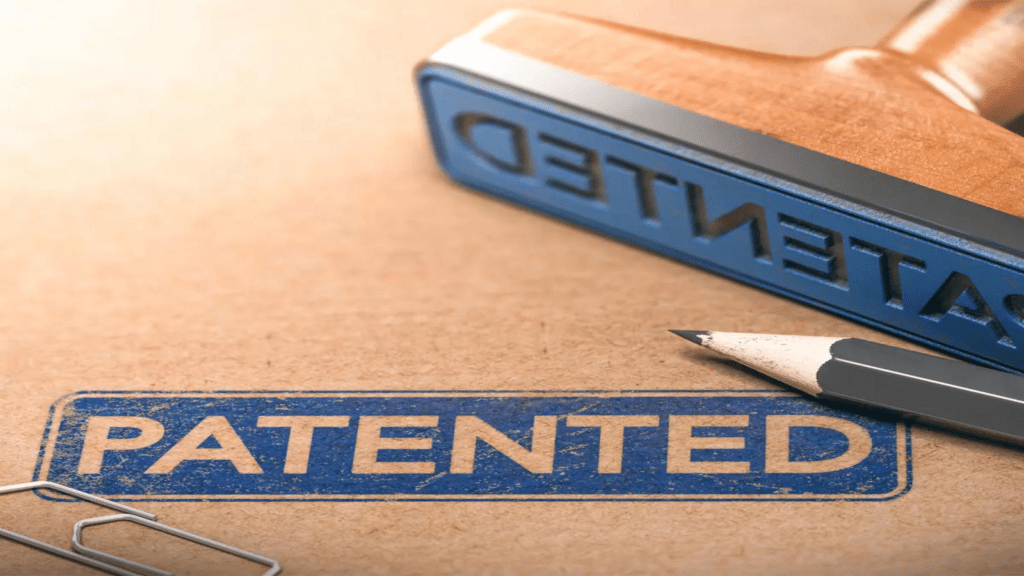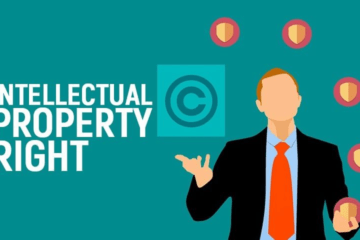
This article is written by Abhilipsa Kar of 10th Semester of Birla Global University, Bhubaneswar, an intern under Legal Vidhiya
ABSTRACT
The word ‘Patent’ simply means a form of exclusivity provided by the government to the inventors for their inventions allowing them to make, use, offer for sale, or sell their inventions and scientific creations, for disclosing it to general public. For pharmaceutical and therapeutic preparations, the Patents Act of 1970 granted ownership of an innovation for a somewhat shorter duration of protection. Nevertheless, with the Amendment (Act) of 2005, all patents were granted a 20-year protection period, after which anybody might utilize them. This article briefly describes about the meaning of the word Patent. It also describes about the requirement of patent rights, the criteria for patents, which are Novelty, Utility or Industrial application and non-obviousness, which is otherwise known as the NUN factors. Then there are certain other important factors such as Section 3 and Section 4 of the Patent Act, 1970 which provides a certain list of inventions which are not patentable in India.
Keywords
Patent, Novelty, Inventions, Non-obviousness, Act, Controller
INTRODUCTION
The word ‘Patent’ means a certain form of individuality or exclusivity provided by the government to inventors in order to allow them to make, use, offer for sale, or sale their scientific inventions in order to disclose them to the general public. In other words, patent is only used for implication regarding and inventions and scientific creation. The word ‘Patent’ has been derived from a Latin phrase ‘Litterae patents’ which means ‘letters patent’. It described about open letter issued by certain authority to the citizens in general and provide them certain rights and privileges above those inventions or scientific creation.
In order to protect the interests of the inventors in our country, the Government of India established a Patent Enquiry Committee on 1st October, 1948 under the chairmanship of Dr. Bakshi Tek Chand. The committee submitted its final report in April 1950 in the Parliament but due to dissolution of the Lok Sabha, the bill was lapsed. The second enquiry committee was established in 1957 under the chairmanship of Justice Rajagopala Ayyangar and the committee submitted its report in the year 1959. The Patent Bill 1965 was introduced in the Parliament based on this report. The 1965 bill was further introduced as the Patents Bill 1970 and received the President assent on 19 September 1970 and it became the Patents Act 1970. The Patent Act, 1970 is the first independent legislation which governs matters related to inventions and their patenting in India.
REQUIREMENT FOR PATENT RIGHTS IN INDIA
In order to acquire the patent right, an inventor need to adhere to certain processes or steps mentioned under the Indian Patent Act, 1970. The term ‘Patent’ is defined under Section 2(1)(m) of the Patent Act. According to this section patent means a right of patent which is granted under this act for any invention and patents are given in India only based on inventions. The term ‘invention’ is also mentioned under section 2(1)(j) of the Patent Act and it defines that any new product or process involving which involves an inventive step and which is capable of industrial application can be included under the head of invention.
By focusing on these sections, it can be concluded that in order to become a patentable invention under the Patent Act,1970, an invention need to involve the following four crucial points;
- The invention can be a product or a process;
- Novelty- Novelty means such product or process has to be new in nature;
- Non-obviousness- Such product or process should involve an inventive step;
- Utility- The invention needs to be capable of industrial application.
These previous factors are collectively known as Novelty-Utility-Non-obviousness factors or the NUN factors.
An inventor can claim his patent rights based on product patent or process patent.
Product patent was allowed in India while India was under the British rule and it was mandated under the Indian Patent Act,1911. But after our independence under the committee headed by Justice Rajagopala Ayyangar, it was recommended that the product patent should be done away with and only process patent should be followed in India, specifically in the field of foods, drugs and chemicals and pharmaceutical patents. It clearly described that in fields other than these a product patent could be granted, but if an inventor tries a product patent on these above-mentioned field, then it will be rejected. Based on the recommendation of the committee, the Patent Act, 1970 also allowed process patent in those fields and product patent cannot be granted to products under these mentioned fields. But as India became a part to the World Trade Organisation (WTO) on 1st January 1995 and it also a signatory to the Trade Related Aspects of Intellectual Property Rights (TRIPS), it was required to allowed on all the signatories that they should allow product patents under their patent laws. It was established in order to protect the interests of the pharmaceutical and drugs companies situated in the western world specifically originated from USA and Europe. Based on the agreement of India with TRIPS, it was required to amend the Patent Act,1970 in order to make it compliant with the TRIPS agreement. An amendment was taking place in the year 2005 in the Patent Act and it introduced product patent regime under the Indian Patent Laws for all technologies including food, drugs, and chemicals and pharmaceutical inventions. While product patent protects interests over substances, physical entities or things such as product and devices, on the other hand protects interest related to processes, activities or actions.[1]
CRITERIA FOR PATENTS
There are broadly three categories of patent.
And they are;
- New invention or Novelty
- Inventive step and non-obviousness
- Utility or Industrial application
New Invention or Novelty
New invention is mentioned under Section 2(1)(l) of the Patent Act,1970. According to this act, ‘any invention or technology which has not been anticipated by publication in any document or used in the country or elsewhere in the world before the filling of the patent application with complete specification i.e. the subject matter is not part of the state of the art or has entered the public domain.’[2]
As per the section, in order to obtain the patent right the invention should be new and it should not have already been predicted as being part of the state of the art. This section provides three factor and they are;
- First, it should not be published anywhere in the world;
- Second, it should not be publicly known;
- Third, the invention should not be publicly worked in India.
If any evidence obtained of involving these three above mentioned factors, then the person in authority should reject the invention on based of lack of new invention or novelty. The patent examiner can also reject the patent application of the inventor if the invention was predicted by prior publication or prior public displays. Section 29 of the Patent Act,1970 describes about the circumstances under which the patent application of the inventor can be rejected because of prior publication or prior public displays. On the other hand, Section 30-32 of the act give exceptions to the circumstances mentioned under Section 29.
Inventive step and non-obviousness
The second criteria for in order to get patent right in India is inventive step or non-obviousness. This is mentioned under Section 2(1)(ja) of the Patent Act, 1970. It describes that, ‘a quality or nature of an invention which includes technical advances as compared to the existing knowledge or having economic significance or both, that does not make the invention obvious to a person skilled in the art.[3] After fulfilling the first criteria of new invention or novelty, the invention needs to fulfil the second and most difficult criteria which is non-obviousness. ‘This is because, an invention may be new, but if a person skilled in the art is given a couple of research papers on the topic and asked to replicate the invention, he should not be in a position to recreate the invention of the inventor. This would prove that the inventor has indeed gone the extra mile and used his mental faculties to create the invention.’ [4]
While dealing with these criteria, we need to consider the fact that monopoly right is granted by the government to the inventor for creating invention which is better for the society at large and if that inventor has not put that extra effort in his invention, then granting that monopoly right would not be justified.
Utility or Industrial Application
The third criteria in order to get the patent right is that the invention should be capable of industrial application. In simple words, it describes that the invention created by the inventor should be capable of being used in the industry. It reflects and promotes the intention of the patent system that monopoly rights given by the government are not granted for mere ideas, which are abstract in nature, or for mental creations.
Every invention must be capable of industrial application is mentioned under Section 2 (1)(j) of the Act. In simple terms, it describes that the invention must be worthy of being used in any industry, either for profit or not. It can also be proved used for any industrial process.
PATENTABLE AND NON-PATENTABLE INVENTIONS
The invention by the inventor which meet the criteria of novelty or new ness, non-obviousness and utility or industrial application are considered as patentable invention in India. Section 3 and Section 4 of the Patent Act, 1970 describes about the inventions which are not patentable.
Section 3 describes about a list of items which are not considered as inventions as per the Patent Act. While Section 4 provides a clarification that inventions relating to atomic energy are not patentable by anybody in the country, as it has been exclusively reserved under the government prerogative. [5]
Section 3 (Non-Patentable Inventions)
- An innovation that seriously compromises the health, welfare, or environment of people, animals, or plants, or who’s primary or intended usage or economic exploitation could be harmful to public morals or order.
- Merely discovering a new use or property for an already-existing substance.
- Rearranging, repeating, or just rearranging well-known gadgets doesn’t produce a new product or use at least one new component.
- A material made by merely combining its ingredients in such a way as to aggregate their respective properties, or a method for creating such a material.
- Just the discovery of a scientific idea.
- Procedures used on humans or animals that are therapeutic, curative, or surgical. This exclusion does not cover any devices or equipment used in this way.
- Plants and animals, whole or in part, other than microbes, such as species, varieties, and seeds; furthermore, the basic biological processes involved in the production or propagation of plants and animals.
- A business or mathematical method rather than an algorithm or computer program.
- A creative activity of any kind, including movies and TV shows, as well as literary, dramatic, musical, or artistic works.
- A basic approach, guideline, or method for carrying out a mental exercise or engaging in a game.
- Informational display.
Section 4
Atomic energy innovations are covered under Section 4 of the Indian Patent Act. It states that no discovery related to atomic energy is eligible for patent protection. Among the significant attributes are:
- Any innovation pertaining to atomic energy is covered by Section 20 of the Atomic Energy Act of 1962. The ownership and application of inventions in the field of atomic energy are covered in Section 20.
- As per Section 20 of the Atomic Energy Act, any innovations related to atomic energy are owned by the Central Government. Private patents are not available for such inventions.
- According to the Act, “atomic energy” includes any mention of fissionable materials, nuclear reactors, atomic piles, and methods for producing, controlling, or using atomic energy.
- Any invention related to or using fissionable materials or atomic energy for commercial or industrial purposes falls under this category.
- This part also prohibits the patentability of methods, apparatus, goods, or compositions of matter that use fissionable material or atomic energy. The intention is to guarantee that the Central Government and the public have unrestricted access to any inventions pertaining to atomic energy.
- Patents cannot be granted for any inventions that are included in the Act’s definition of atomic energy. Such inventions belong to the government.
In addition to these inventions not allowed to be patented in the country, if an inventor files for a patent on subjects which have been notified by the Central Government as relevant for defence purposes, then under the provisions of Section 35 of the Patent Act, the Controller may direct the inventor not to disclose the invention or publish such information to the general public. In addition to this, the Controller shall give notice of such application to the Central Government and seeks its direction on this matter. If the Central Government feels that this subject matter of the invention could really be prejudicial to the defence of India, then it could direct the Controller to continue such direction. If not, then it can direct the Controller to revoke such direction and proceed with the grant of patent.[6]
CASE LAWS
Novartis Ag v. Union of India[7]
In this landmark case the Hon’ble Supreme Court of India decided that a mere discovery of an item or substance would not be amounted to new invention. The Supreme Court of India further held in this case that, in addition to the tests of novelty, inventive step, and application, pharmaceutical patents also have to pass a new test of enhanced therapeutic efficacy for claims covering gradual modifications to already-approved medications, which Novartis’s drug did not meet.
Ferid Allani v. Controller General of Patents & Designs[8]
The Ferid Allani v. Controller General of Patents & Designs case was utilised to assess how Section 3(k) was understood and applied. The method for utilising Boolean search queries to retrieve data from a database is covered by the current invention.
The invention was found to be a mathematical technique applied to computer systems without exhibiting any appreciable technological advancement, so the patent application was rejected under Section 3(k). The decision states that computational techniques devoid of technological innovation and only based on mathematical formulas or business laws are not eligible for patent protection under Indian law. The goal of Section 3(k) is to prevent monopolies on algorithms and abstract mathematical approaches from forming. However, the amended rule may still allow software that uses technical techniques and generates a technical result to be protected by a patent.
Thomas Brandt vs. Controller of Patents[9]
In this case, the Delhi High Court decided that a ‘Process of Manufacture’ is independent of the substance produced by the manufacture. This simply means that the process of manufacture has a distinctive identity of its own, unconnected with the product of manufacture and could be protected separately. The same product manufactured using a different process would not be infringing on the original process patent and it could be independently practiced without infringing the original patent.[10]
CONCLUSION
Intellectual property protection is a topic that intrigues innovators and inventors greatly. India is a nation that recognizes the value of comprehensive patent laws in fostering the development of its economy and bringing it up to speed with the rest of the world. The number of patent applications has increased since the Indian Patent Act was passed. This act’s Sections 3 and 4 (which include inventions which are not-patentable) have served as a means to determine what qualifies as an invention. Patents are only granted for novel and practical innovations. Setting precedents against patent infringement and understanding the exclusions have been made simplified by cases like Novartis. India aims to achieve the right balance between encouraging innovation driven by research and limiting the use of certain subject matter. The changing exclusions make an effort to strike this challenging balance while continuing to be in line with the nation’s public policy objectives.
REFERENCES
- Nithyananda K.V, Intellectual Property Rights Protection and MANAGEMENT (CENGAGE 2019).
- Patent Act,1970, No 39, Acts of Parliament, 1970 (India).
- https://depenning.com/blog/non-patentable-inventions/ (last visited on 6 February 2024).
- https://lawbhoomi.com/an-introduction-to-patents/ (last visited on 6 February 2024).
- https://indiankanoon.org/doc/165776436/ (last visited on 20nd February,2024).
- https://indiankanoon.org/doc/23928363/ (last visited on 20nd February,2024).
- https://depenning.com/blog/non-patentable-inventions/ (last visited on 20nd February,2024).
[1] Nithyananda K.V, Intellectual Property Rights Protection and Management 27 (CENGAGE 2019).
[2] Patent Act,1970, § 2(1)(l), No 39, Acts of Parliament, 1970 (India).
[3] Patent Act,1970, § 2(1) (ja), No 39, Acts of Parliament, 1970 (India).
[4] Nithyananda K.V, Intellectual Property Rights Protection and Management 30 (CENGAGE 2019).
[5] Nithyananda K.V, Intellectual Property Rights Protection and Management 32 (CENGAGE 2019).
[6] Nithyananda K.V, Intellectual Property Rights Protection and Management 34 (CENGAGE 2019).
[7] https://indiankanoon.org/doc/165776436/, last visited on 20nd February,2024.
[8] https://indiancaselaw.in/allani-ferid-v-assistant-controller-of-patents-and-designs/, last visited on 20nd February,2024.
[9] Thomas Brandt vs. Controller of Patents, AIR 1989 Delhi 249.
[10] Nithyananda K.V, Intellectual Property Rights Protection and Management 27 (CENGAGE 2019).
Disclaimer: The materials provided herein are intended solely for informational purposes. Accessing or using the site or the materials does not establish an attorney-client relationship. The information presented on this site is not to be construed as legal or professional advice, and it should not be relied upon for such purposes or used as a substitute for advice from a licensed attorney in your state. Additionally, the viewpoint presented by the author is of a personal nature.




0 Comments